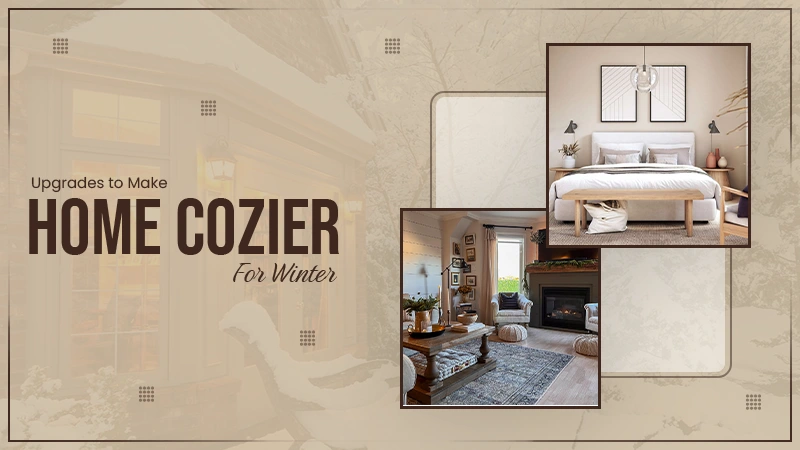When we think of décor, we often imagine pillows, paint colours, and furniture styles. But the most profound impact of design lies not in trend cycles but in how our spaces reflect how we live, connect, and grow. A home that aligns with your values and routines becomes more than a backdrop; it becomes a foundation for family, creativity, rest, and belonging.
Communities whose design carries intention offer us a blueprint. They emphasise connection, green space, flexible areas, and thoughtful architecture. One such community illustrates how thoughtful planning from open common areas to natural corridors influences lifestyle. Borrowing elements from such developments can help bring the same sense of spaciousness, flow, and calm to your living environment.
What Makes Purpose-Driven Homes Feel Different
A home that serves life rather than demands maintenance has several key characteristics. First, it reflects the rhythms of those who live there. Second, it supports connection and flexibility rather than static spaces that feel rigid. Third, it honours the environment and invites movement rather than resisting it.
In communities known for design strength, you will see: generous green corridors, flexible shared spaces, homes oriented for natural light and gathering. At the heart lies a belief that design and décor should nurture life. A homeowner who adopts this mindset treats décor decisions as investments in how the family lives, not only in how the home looks.
When you design with intention, you invite calm into the home. Removing unnecessary barriers, choosing materials that age gracefully, and designing adaptable areas brings ease. Surfaces that are easy to maintain, furniture that can shift roles, and rooms that flow into each other deliver more than beauty; they offer utility and peace.
Key Décor Principles Every Family Should Consider
- Flow and flexibility: Choose furniture and layouts that allow movement and gathering. A dining table can become a craft station, and a sofa zone can shift for homework or movie night.
- Nature and light: Incorporate plants, large windows, and outdoor-indoor cues. Even indoors, natural textures and light tones create openness.
- Meaning over trend: Choose décor items that matter to the family story rather than follow every fad. That keeps your home grounded and timeless.
- Adaptable zones: Create multi-use spaces. A play area today might transform into a reading nook tomorrow.
One key insight from community design is the presence of shared spaces, neighbourhood parks, walking paths, and gathering areas. These remind us that homes don’t exist in isolation. At home, you can replicate this sense of connection through flexible living spaces that invite conversation, and quiet zones that support reflection and creativity.
Translating Community Design Concepts Into Your Home
When a community is designed with shared green spaces, walking trails, and a flexible way of life in mind, homeowners experience benefits beyond architecture: connection, openness, and continuous relevance. You can bring these elements into your home at any scale.
Think about the path of movement through your home. People flow from the kitchen to the dining, from the living room to the outdoor patio, from the play zone to the rest zone. If you prepare your décor and layout with these flows in mind, you eliminate friction. For example, placing the homework station between the family room and kitchen allows natural supervision and conversation rather than isolation.
Another idea is “nested zones.” Communities often offer layers: private lots, shared yards, community greens. At home, you might have private bedrooms, a shared living zone, and a flexible hybrid space (garage studio or backyard patio) for occasional use. These layers support living, connection, and expansion.
Designing for future needs means selecting durable, flexible pieces: a large island in the kitchen that serves morning routines, weekend baking, and gatherings; a modular sofa that adapts to teens, games, or guests; a backyard that supports children’s play today and adult relaxation tomorrow. Thoughtful choices pay off in time and experience.
Building a Home That Grows With You
- Select multi-purpose furniture: A bench with storage, a desk that becomes a craft station, and shelves that adjust height.
- Use colour and texture to define zones: A soft rug can anchor a play area; a rich accent wall can signal an adult relaxation space.
- Prioritise comfort and wellness: Include physical comfort—good lighting, ergonomic chairs, quiet corners. These matter for everyday living.
- Keep a declutter cycle: Set seasonal reviews where you clear out, reassign, or refresh zones rather than let items accumulate.
By adopting this mindset, you reduce the need for major renovations as life changes. The home you design for your children today will still serve them when they leave. Your décor evolves rather than becomes obsolete.
Incorporating Nature, Wellness, and Belonging
Homes rooted in thoughtful design emphasise access to nature and wellness. You can integrate this by creating outdoor-inspired décor, using natural materials, and designing for daylight and fresh air. Plants, windows that open, and flexible outdoor seating become as important as indoor décor pieces.
Belonging is a facet often overlooked. A home styled only for display can feel detached from who lives there. A home styled for living invites participation: family photos, heirlooms, project tools, artwork alongside everyday items. These elements give the décor authenticity and emotional resonance.
Creating spaces where you feel supported leads to reduced stress. When homes mirror the way you live rather than forcing you into a mould, you become more present, more connected. From simple improvements like adding a patio where you actually sit, to designing a corner for music or reading, the environment supports the person, not the personality of the furniture.
Style Strategies for the Mindful Home
Bringing purpose into décor means making consistent choices across aesthetics, function, and emotion. Choose surfaces that reflect light, textures that invite touch, and shapes that encourage gathering. Neutral foundations with accent pieces that matter keep décor relevant.
Consider these principles:
- Anchor your décor in things you love and that support you. If you love travel, make a wall of maps or collected items. If you value family time, create zones where you gather, such as movie nights, board games, and reading.
- Let décor relax. Avoid filling every surface. Negative space gives your home room to breathe physically and visually.
- Use soft lighting. Lamps, dimmers, and layering light sources create warmth. The glow invites connection rather than glare.
- Keep adaptability in mind. Rental homes, growing families, and changing hobbies all benefit from décor that is adaptable. Modular pieces, open layouts, and interchangeable accent pieces help.
Design is not about perfection. It is about alignment. When your home aligns with your lifestyle and values, it becomes a place of calm, growth, and presence.
Bringing the Outdoor Community Feel Inside
Communities that emphasise open space, recreation, and connectedness can inspire home interiors too. Imagine extending your living room into your garden. Imagine breakfast on a patio, movie night under string lights, mornings with coffee by a window surrounded by plants.
At home, this means thoughtful landscaping, indoor-outdoor transitions, flexible living zones, and décor that invites participation.
Homes that blur the line between inside and outside living invite breathing space, natural light, and renewal. A sliding door that leads to a patio, a window seat with views, and a backyard hammock all support a lifestyle. If you incorporate these elements into your décor plan, your home will support not just appearance, but living.
Your Mindful Décor Checklist and Final Thoughts
As you embark on designing or redesigning your home with intention, ask yourself: “Does this space help me feel connected, calm, and alive rather than overwhelmed?” Use your answers to guide both big purchases and small decisions.
Hold onto these ideas:
- Decorate with purpose. Ask whether each item creates connection, reflection, or function.
- Design for change. Choose elements that support childhood, adolescence, and adulthood.
- Embrace spaciousness. Negative space matters as much as furnishings.
- Blur indoor/outdoor life. Include greenery, natural light, and gathering zones.
- Anchor décor in family identity and values rather than trends.
When you design your home with life in mind, the décor becomes an act of care—not just for the space, but for the people within it. It becomes a space that better reflects the family, supports their rhythms, and grows with them through the years.
A beautiful home works. A living home evolves. When you combine thoughtful layout, adaptable furnishings, and meaningful décor, you create a space that honors the present moment and invites the next chapter.



